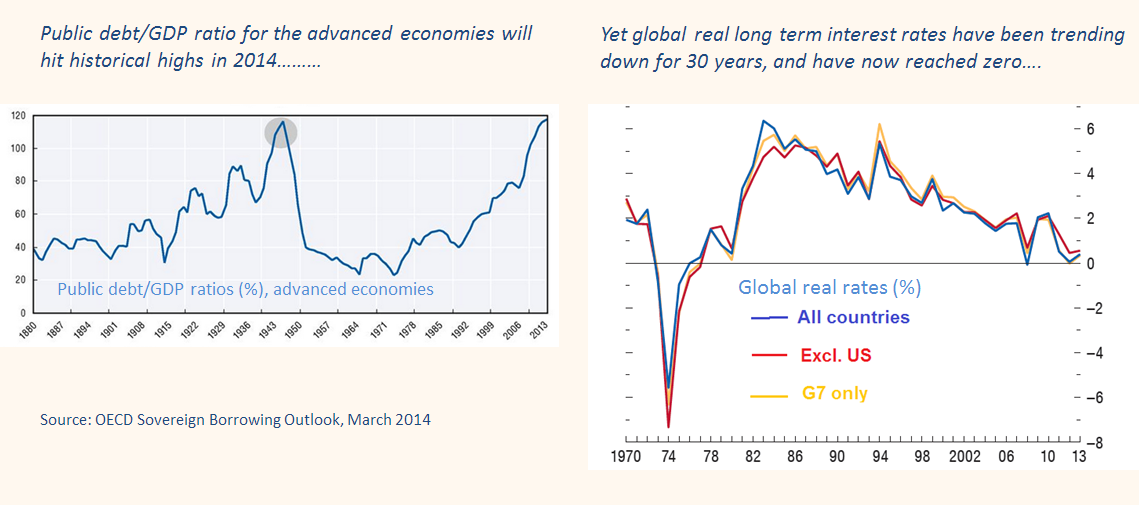From Mr. Davies' blog at the Financial Times:
The OECD pointed out
last week that the ratio of public debt/GDP will reach all time
historic highs in 2014, at about 120 per cent. Taken in isolation, this
could certainly viewed as a worrying fact, with bad implications for the
future of real interest rates and possibly inflation. A couple of days
later, however, the IMF published a fascinating chapter in its latest World Economic Outlook (WEO)
on global real interest rates, showing that the global real rate has
fallen from about 6 per cent in the early 1980s to about zero today.
Both of these facts are of course very well known, but placed side-by-side, they still represent a stark contrast:

They also present a conundrum for policy makers and investors. Why
has the surge in public debt not resulted in a large rise in real
borrowing costs for the government, and for the wider economy? And what
does this tell us about the future of the risk free real rate in the
global economy?
The risk free rate is the bedrock of asset valuation, and is often
presented as one of the great “constants” in economic models. But in the
past few decades, it has been anything but constant.
Mainstream macro-economic theory assumes that the global real
interest rate is determined in the market for capital or “loanable
funds”. An upward shift in the demand for capital (from higher
investment or more public debt) will raise real rates, and a rise in the
supply of capital (from higher savings) will reduce them.
Empirical studies generally confirm that the positive association
between public debt and real rates, expected in theory, does indeed
exist (though this is controversial and not well pinned down). Therefore
the strongly negative relationship between the two variables since 1983
is certainly a prima facie puzzle.
The solution lies in the “ceteris paribus”, or other things
equal, clause implicitly inserted into all economic models. Other
things, in this case, have certainly not been equal. While the rise in
public debt, taken on its own, would probably have increased real rates,
other economic forces have worked more powerfully in the opposite
direction.
The IMF says that the main reason for the drop in real rates in the
1980s and 1990s is obvious: the easing in monetary policy that occurred
after the 1979-82 Volcker tightening. After 2000, the IMF identifies
other forces, each of which is associated with a different school of
economic thinking....MORE
HT:
The Big Picture
